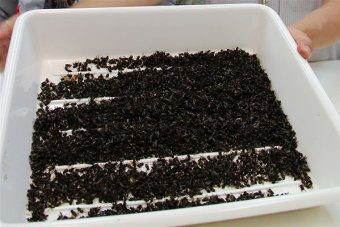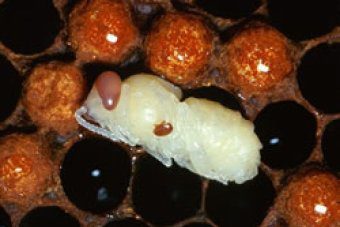The US state of Hawaii is using selective breeding to win the war against the destructive varroa mite, which is crippling honey bee populations around the world.
The overall significance of honeybees is often overlooked, but keeping up natural bee populations is critical for farmers who need crops to be pollinated.
Australia is still free of varroa destructor, but the major pest has been spreading around the world, including to neighbouring New Zealand and Indonesia.
Dr Danielle Downey, from the Hawaii Department of Agriculture, is trying to
rid the Hawaiian islands of the pest, by breeding disease-resistant bees.
She has had some success, which could help Australia prepare for what many see as the inevitable spread of varroa mites here.
“We started with a mishmash of bees with a variety of vulnerabilities to varroa mite,” Dr Downey said.
“What we're hoping to come up with is a bee that is well-suited to Hawaiian conditions and is able to help itself against varroa mite.
“We want the bee to keep the levels of varroa low without us having to treat it with pesticides.”
Dr Dow ney said that, in the colonies she had surveyed which contained the varroa-resistant bees, she had recorded a varroa mite prevalence of less than five per cent.
ney said that, in the colonies she had surveyed which contained the varroa-resistant bees, she had recorded a varroa mite prevalence of less than five per cent.
“We have colonies that have gone now for almost a year with less than five per cent varroa mites, which is pretty low in a place with year-round breed production,” she said.
Varroa mites have reached Australia in the past, but were immediately destroyed upon detection. The Department of Agriculture estimates that if the pest does establish itself in Australia it will cost the agricultural industry $70 million a year.

